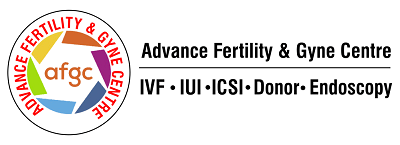Fertility yoga is a specialized form of yoga designed to support reproductive health, regulate hormones, reduce stress, and improve circulation to the reproductive organs. It’s not just about physical postures, it’s a holistic approach that nurtures the mind-body connection, creating a more receptive environment for conception. Whether you’re trying to conceive naturally or with assisted reproductive technologies (ART), fertility yoga offers gentle yet effective support along your journey.
What Is Fertility Yoga?
Fertility yoga combines restorative, gentle Hatha, and breath-centered practices tailored to support reproductive health. It helps:
- Balance the endocrine (hormonal) system
- Increase blood flow to the uterus and ovaries
- Reduce cortisol (stress hormone) levels
- Strengthen the pelvic region
- Promote emotional wellbeing
It emphasizes poses that open the hips, stimulate the pelvic area, and calm the nervous system. Meditation, visualization, and pranayama (breathwork) are often included to regulate energy flow and manage stress.
How Yoga Can Improve Fertility
Yoga can positively affect fertility in multiple ways:
- Reduces Stress
Chronic stress disrupts hormonal balance and ovulation. Yoga activates the parasympathetic nervous system shifting the body into a “rest and digest” state, ideal for reproductive function.
- Improves Blood Flow to Reproductive Organs
Gentle movement and inverted poses enhance circulation to the uterus and ovaries, creating a nourishing environment for egg maturation and implantation.
- Supports Hormonal Balance
Certain poses stimulate the endocrine glands, like the pituitary, thyroid, and adrenal glands that regulate reproductive hormones.
- Enhances Pelvic Alignment
A healthy alignment of the pelvis and spine can support the uterus and increase the chance of successful implantation.
- Increases Body Awareness
Yoga fosters a deeper connection to your body, helping you recognize signs of ovulation, tension, or imbalances that might affect fertility.
Yoga Positions for Fertility: 7 Poses That Support Conception
Here are seven gentle, targeted poses often recommended for fertility:
- Supta Baddha Konasana (Reclining Bound Angle Pose)
- Opens hips and groin
- Increases circulation to pelvic organs
- Promotes deep relaxation
- Setu Bandhasana (Bridge Pose)
- Stimulates the reproductive organs
- Strengthens the back and opens the chest
- Viparita Karani (Legs-Up-the-Wall Pose)
- Improves blood flow to the pelvic area
- Calms the nervous system
- Bhujangasana (Cobra Pose)
- Increases circulation to uterus and ovaries
- Stimulates adrenal and thyroid glands
- Paschimottanasana (Seated Forward Bend)
- Calms the mind
- Relieves stress in the lower back and pelvic region
- Balasana (Child’s Pose)
- Releases lower back tension
- Gently compresses the abdomen and soothes the mind
- Malasana (Garland Pose)
- Opens hips and stretches the pelvic floor
- Enhances alignment and strength in the lower body
Tip: All bodies are different so the poses can be adapted accordingly by using props like blocks and yoga blankets as a support.
Safety Guidelines for Fertility Yoga
- Avoid Overexertion: Gentle and restorative poses are ideal. Avoid intense heat, fast-paced vinyasa, and deep twists.
- Honor Your Cycle: Modify your practice based on your menstrual cycle or fertility treatment phase.
- Skip Inversions Post-Ovulation: If you’re trying to conceive, avoid inversions (like headstands) after ovulation or embryo transfer.
- Listen to Your Body: Pain is a sign to stop. Adjust postures to avoid strain.
- Check with Your Doctor: Especially if undergoing fertility treatments, consult your practitioner before starting a yoga program.
Best Time to Start Fertility Yoga
You can begin fertility yoga at any point in your menstrual cycle, but syncing it with your cycle can maximize benefits:
- Menstruation (Days 1–5): Focus on rest, breathing, and gentle restorative poses.
- Follicular Phase (Days 6–14): Gentle strength-building and pelvic-opening poses can support egg development.
- Ovulation (Around Day 14): Use calming, supportive poses to encourage implantation.
- Luteal Phase (Days 15–28): Focus on stress reduction and restorative practices. Avoid intense movement or inversions.
Key Takeaways
Fertility yoga is a gentle, holistic practice that supports hormonal balance, stress reduction, and reproductive health.
It combines physical postures, breathwork, and mindfulness to create a fertility-friendly internal environment.
Certain yoga poses, like Supta Baddha Konasana and Viparita Karani are especially helpful for enhancing blood flow and calming the nervous system.
The practice should be gentle and adapted to your cycle or treatment phase.
Consult your healthcare provider, especially if using ART or facing specific fertility challenges.
Grateful to my friend, yoga instructor, and lifestyle coach Anjali Chawla for sharing her wisdom in our Fertility Yoga Blog.

